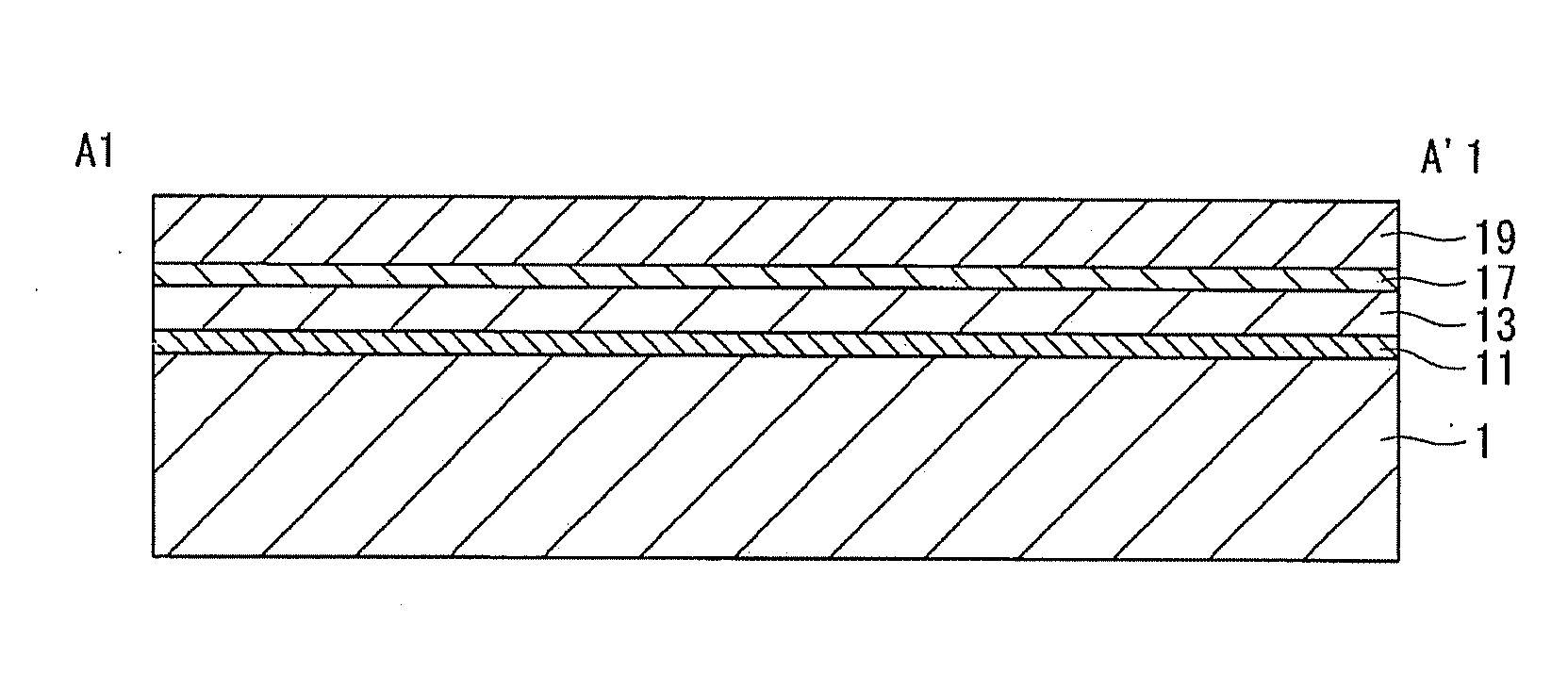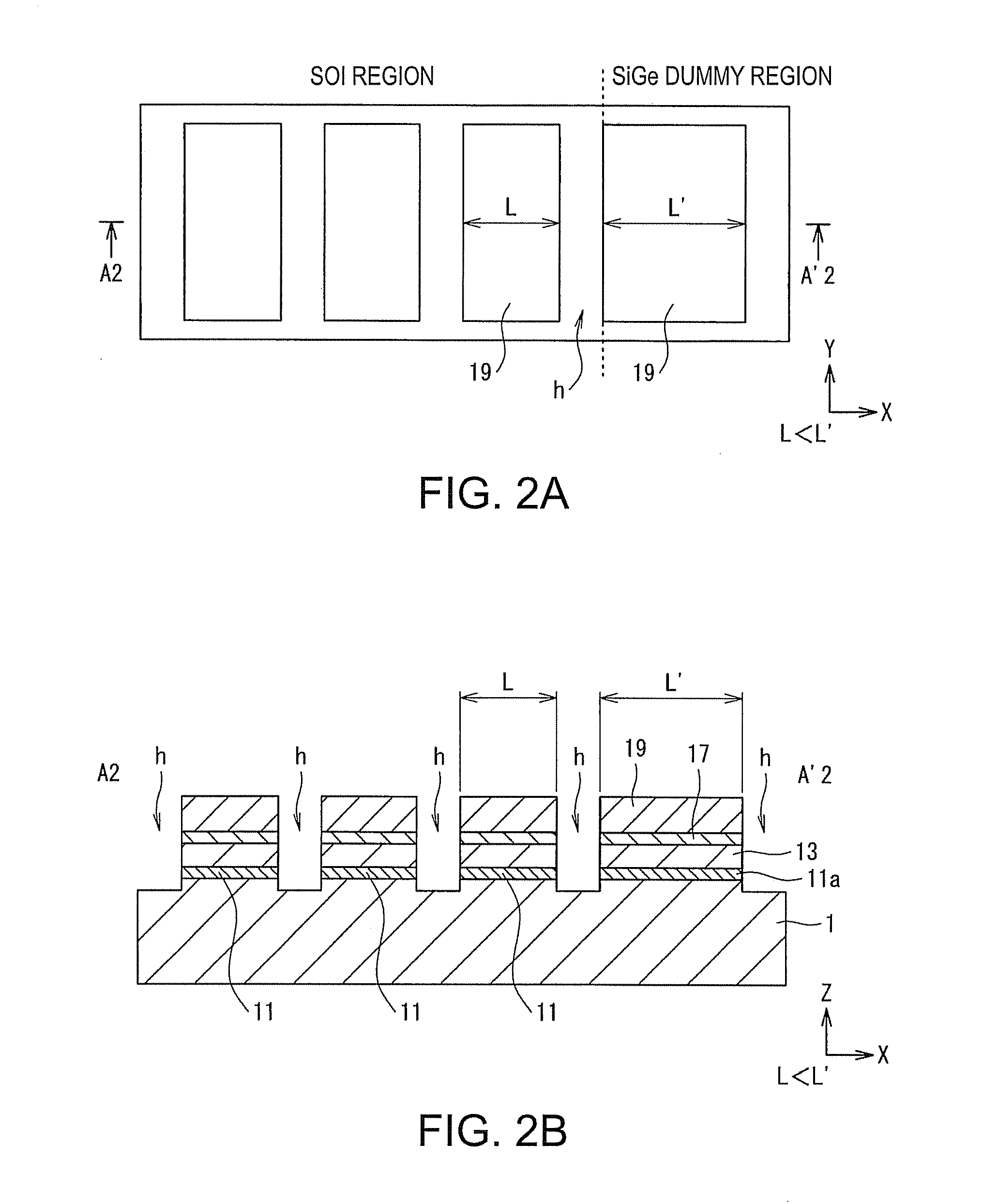Method for manufacturing semiconductor device
a manufacturing method and semiconductor technology, applied in the direction of semiconductor devices, basic electric elements, electrical equipment, etc., can solve the problems of deterioration of the etching speed of the sige layer in some areas, large area differences and density differences, and slowing down speed, so as to improve the process yield and stabilize the electric property , the effect of improving the etching selectivity
- Summary
- Abstract
- Description
- Claims
- Application Information
AI Technical Summary
Benefits of technology
Problems solved by technology
Method used
Image
Examples
first embodiment
[0060]FIGS. 1A through 8B are diagrams showing a method for manufacturing a semiconductor device according to a first embodiment of the invention. In FIGS. 1A through 8B, figures suffixed with the letter “A” are plan views. Figures suffixed with the letter “B” are sectional view respectively taken along the lines A1-A1′ to A8-A′8 of the figures suffixed with the letter “A”. Further, in FIGS. 4A to 6C, FIGS. 4C, 5C, and 6C are sectional views respectively taken along the lines B4-B′4, B5-B5′, and B6-B′6. In FIGS. 5A to 6D, FIG. 5D and FIG. 6D are sectional views respectively taken along the line C5-C′5 and C6-C′6.
[0061]Referring to FIGS. 1A and 1B, on a whole surface of a Si substrate 1 including an SOI region and a SiGe dummy region, a single-crystalline silicon buffer (Si-buffer) layer which is not shown, a single-crystalline silicon-germanium (SiGe) layer 11, and a single-crystalline silicon (Si) layer 13 are layered in this order. The Si-buffer layer, the SiGe layer 11, and the S...
second embodiment
[0079]While the first embodiment shows the case where one SOI region and one SiGe dummy region are arranged in an adjacent manner, the positional relation between them is not limited to such case. In order to maintain a SiGe dummy pattern as long as possible in a SiGe selective etching process, the positional relation between the SOI region and the SiGe dummy region may be devised as well as the shape or the size of the SiGe dummy pattern.
[0080]FIGS. 11 to 16 are plan views showing a method for manufacturing a semiconductor device according to a second embodiment of the invention. In the second embodiment, members having the same structure and the function as those in the first embodiment have the same reference numerals and their description will be omitted.
[0081]Referring to FIG. 11, a single crystalline Si-buffer layer which is not shown, a single crystalline SiGe layer, and a single crystalline Si layer are layered on the whole upper surface of a Si substrate including an SOI re...
PUM
| Property | Measurement | Unit |
|---|---|---|
| insulator | aaaaa | aaaaa |
| semiconductor | aaaaa | aaaaa |
| capacitance | aaaaa | aaaaa |
Abstract
Description
Claims
Application Information
 Login to View More
Login to View More - R&D
- Intellectual Property
- Life Sciences
- Materials
- Tech Scout
- Unparalleled Data Quality
- Higher Quality Content
- 60% Fewer Hallucinations
Browse by: Latest US Patents, China's latest patents, Technical Efficacy Thesaurus, Application Domain, Technology Topic, Popular Technical Reports.
© 2025 PatSnap. All rights reserved.Legal|Privacy policy|Modern Slavery Act Transparency Statement|Sitemap|About US| Contact US: help@patsnap.com



